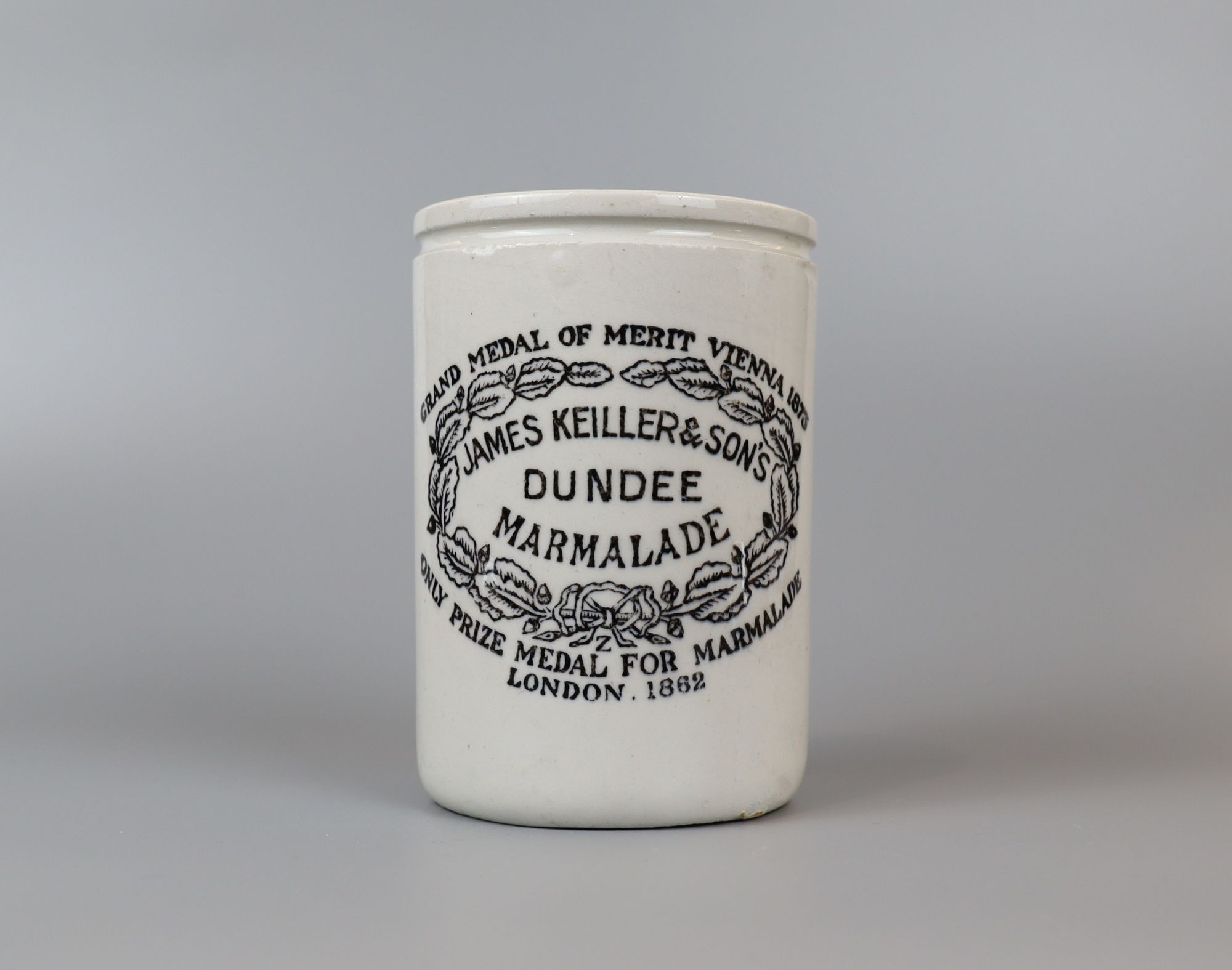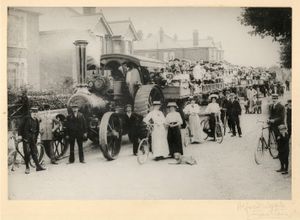Hampshire Cultural Trust has received funding from National Lottery Heritage Fund to help reimagine the Allen Gallery and its nationally significant ceramic collection over the next year. As a part of this project, we are researching and discovering the collections’ untold stories.
This months article focuses on a Dundee Marmalade jar in the gallery's collection.
Dundee Marmalade
Marmalade is a preserve made from the juice and peel of citrus fruit boiled with sugar and water. Marmalade has been around for centuries. In a 1677 book by Eliza Cholmondeley a recipe for Marmelet is cited.
James Keiller and Sons were a Dundee company of “Confectioners and Preserve Manufacturers”. According to the story, they first produced marmalade in 1797, when the mother of James Keiller, Janet’s husband, bought a “distressed” cargo of Seville oranges. They used the bitter orange peel in the marmalade. They soon set up a company to produce this commercially. Dundee Marmalade is thought to be the first commercial brand of marmalade in Great Britain.
James Keiller senior died in 1839 and the company was run by his second wife, Margaret. They expanded, and in 1914, there was even a branch of the company in Germany.
Dundee Marmalade was highly regarded. They were awarded the “Only Prize for Marmalade, London 1862” at the International Exhibition of 1862, at which 28,000 exhibitors from 36 countries descended on South Kensington.

Maling Pottery
The jar itself was produced by the Maling Pottery. The pottery was found in 1762 in North Hylton, Sunderland, by French Protestant Hugenots (originally called Malin) who fled to England to escape religious persecution in the late 16th century. This pottery was based in Newcastle upon Tyne until its closure in 1963.
Maling’s made a vast range of everyday white ware: domestic kitchenware, jars and pots for food companies, ink pots and crockery for railway companies, shipping lines and hotels. They also produced decorated lustre ware. At the height of its success the pottery claimed to be the largest in the world.
In the early 1850s, Christopher Thompson Maling was in charge of the business. He discovered a way to make packing containers by machine rather than by hand. This enabled jars and pots to be produced on a massive scale and led to new commercial customers like James Keiller and Sons.
Records show that one year Keiller ordered 1.5 million jars. The perfect new packaging to mass produce and export their marmalade.
Researched and written by Karen Stewart, Ceramics Research Volunteer
For more information about our Rediscovering the Allen Gallery project, click here.






